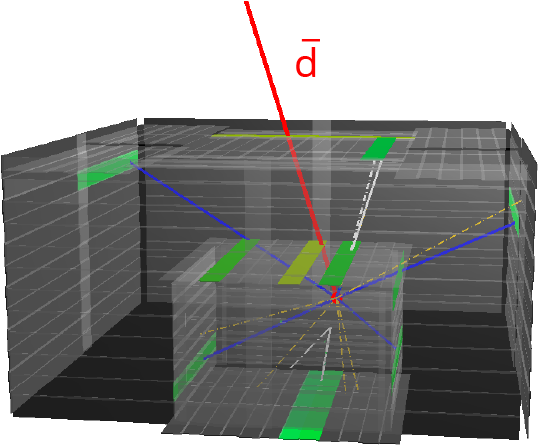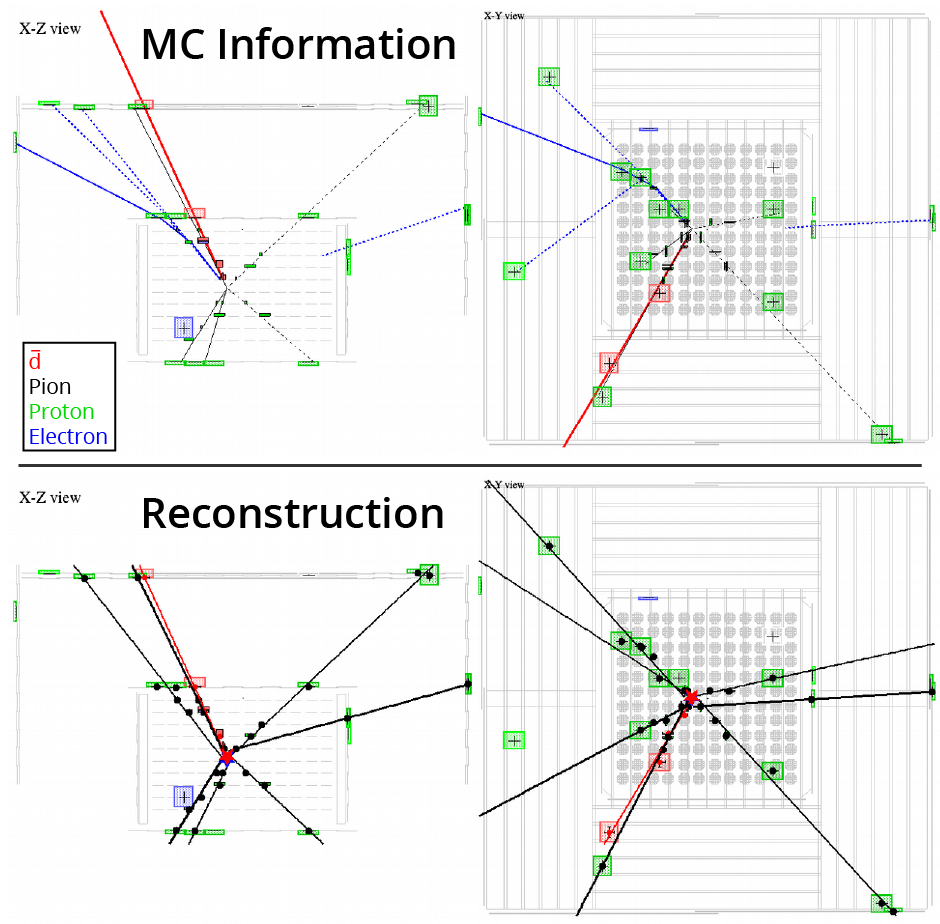 Simulated antideuteron in GAPS.
Simulated antideuteron in GAPS.
 Example of a reconstructed antideuteron. The true particle paths (top) and reconstructed tracks (bottom) are shown.
Example of a reconstructed antideuteron. The true particle paths (top) and reconstructed tracks (bottom) are shown.
The GAPS simulations are jointly developed by scientists at multiple institutions. The software is responsible for the simulation of particles impinging upon the instrument, reconstruction of individual events, and analysis of large sets of events. The Geant4 toolkit is used to simulate particle interactions and to define the instrument geometry and physical properties. There is also ongoing work with the Geant4 team on the implementation of exotic atomic X-ray production, as well as validation of hadronic physics. Simulation results are digitized into a ROOT file format, identical to the data format so that both real and simulated data can be handled by the same subsequent analysis stages.
The expected performance of GAPS is evaluated through simulations. To detect antideuterons, high rejection power and sufficient acceptance are necessary, among other requirements. To determine these values a large number of simulations are needed, which are run on computing facilities at the University of Hawaii and INFN. The simulations also allow for the development of the reconstruction algorithm and in-flight triggering scheme, as well as informing other aspects of the GAPS design, such as the exact Si(Li) thickness.